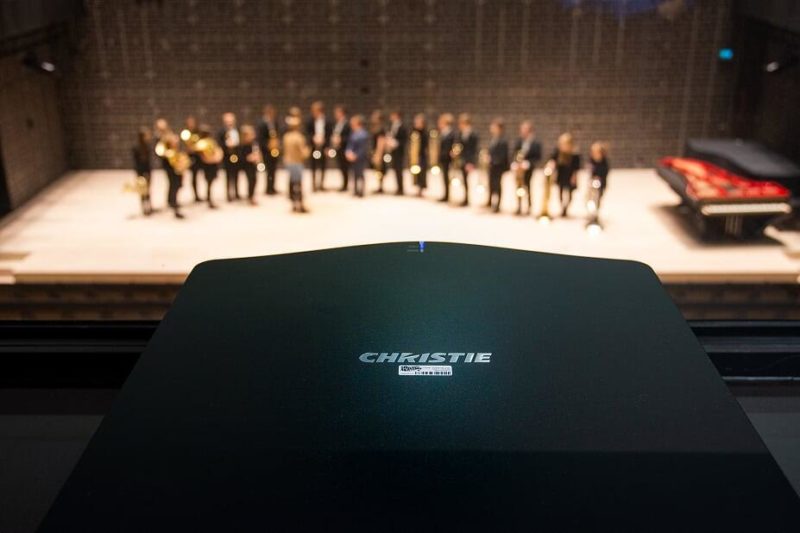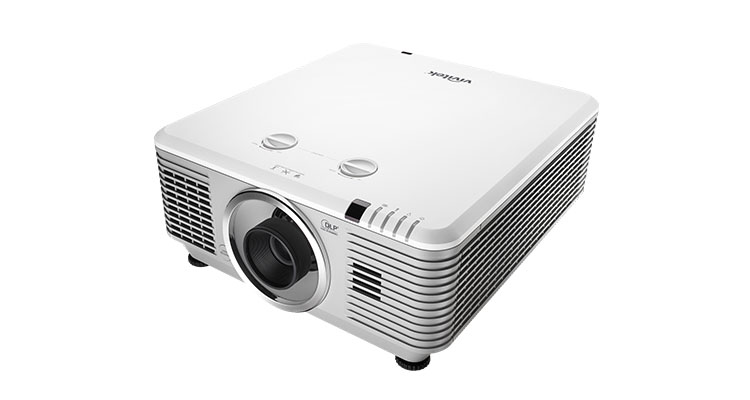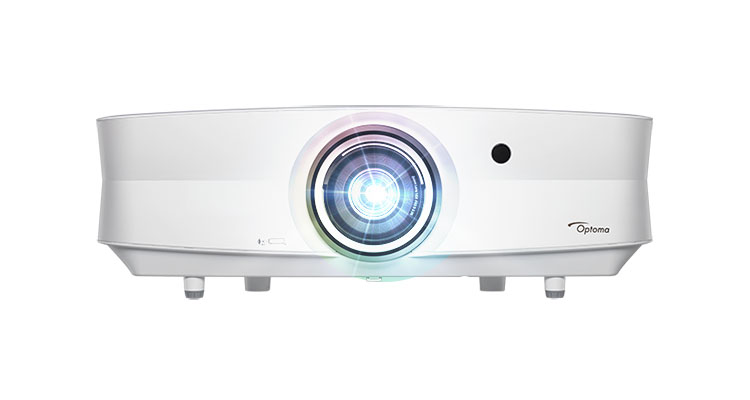InfoComm: Do Lasers Mean a New Age for Projection Technology?
By Monica Heck
Special to InfoComm International
It’s safe to say that laser has ushered in a new era for projection technology. Challenging the dominance of lamps in an increasing number of market segments, laser technology has been key to the development of the new era of solid-state light sources.
Projector light source history even has its own watershed Before Casio and After Casio eras: Casio shocked the market in 2010 when it unveiled the first high-brightness mercury-free hybrid laser/LED light source at CES, described at the time a generating over 2,000 lumens.
“Laser within projection was key to Casio,” comments Phil Clark, head of projection at Casio. “Without laser, we couldn’t have invented that light source because laser was the boosting mechanism to get that high brightness, which previous LED solutions didn’t have.”
Soon thereafter, other manufacturers started announcing their own flavor of laser-based solid-state projectors. Various combinations of true laser, LED-laser and laser-phosphor emerged to target various applications, aiming to drive down the costs associated with lamp technology while improving projector brightness and eco-friendliness.
Defining Laser
Insight Media senior analyst Matthew S. Brennesholtz reported from the recent Display Summit at InfoComm that the industry seems to have settled on some badly needed standard terminology to describe the solid-state projector world.
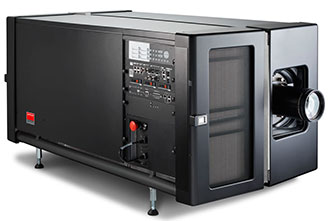 A laser projector is defined as a projector where all the light energy comes from lasers. “This includes projectors with RGB lasers and blue lasers driving phosphors,” says Brennesholtz. “No LEDs are used.” He highlights that pure laser projectors can go way beyond the current 12K-lumen limit of laser-phosphor, to 60K lumen and over.
A laser projector is defined as a projector where all the light energy comes from lasers. “This includes projectors with RGB lasers and blue lasers driving phosphors,” says Brennesholtz. “No LEDs are used.” He highlights that pure laser projectors can go way beyond the current 12K-lumen limit of laser-phosphor, to 60K lumen and over.
Aimed at an ultra-niche d-cinema market, these ultra-bright projectors can fill large screens at a numbered amount of high-end venues worldwide. High-brightness laser projectors are no longer just a conversation topic — they are now hitting the market. Barco launched its new 6P laser for the cinema market last March in Las Vegas, saying the 60K-lumen 4K projector for large-screen format applications would soon go live in the United States and China.
Barco’s pure-laser projector is aimed at cinema but will have other applications like large venue, outdoor projection and projection mapping applications.
“A big advantage for applications that run for a long time is the fairly constant brightness,” says Bram Dieryckx, director for projector product management at Barco. “A lamp decays fairly quickly over time from hundred percent to fifty percent, at which point you have to replace it. With laser, the brightness decays over the full lifetime of the laser — which is around fifty thousand hours — to eighty percent.”
A single laser projector installation can show 3D at much higher brightness and circumvent the rapid Xenon lamp burn-out common in dual projector installations, notes Brennesholtz. He also highlights that the new 6 Primary 3D projectors, such as the one launched by Barco, are taking full advantage of the properties of laser beyond using it as a bulk light source.
The second category is defined as the laser phosphor projector: a projector where at least one channel comes from a laser driving a phosphor, either a blue laser to drive a yellow phosphor or a blue laser driving red and green phosphors. No LEDs are used in this projector.
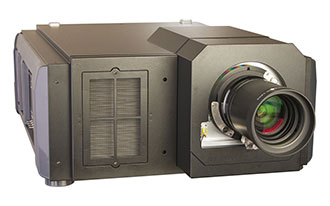 Digital Projection introduced a 12K-lumen laser phosphor projector at ISE this year. “You can buy cheap 1.6-watt blue lasers as they are manufactured at high volume,” explained Dermot Quinn, director of product development at Digital Projection. “The projector industry is leveraging that volume and pointing lots of them at a spot on a phosphor material, so it’s no longer laser light — there isn’t direct laser light of any significant amount coming from the projector, so the regulatory industry takes a friendlier view to it. And, because the laser spots are very small, you can create quite an efficient light source.”
Digital Projection introduced a 12K-lumen laser phosphor projector at ISE this year. “You can buy cheap 1.6-watt blue lasers as they are manufactured at high volume,” explained Dermot Quinn, director of product development at Digital Projection. “The projector industry is leveraging that volume and pointing lots of them at a spot on a phosphor material, so it’s no longer laser light — there isn’t direct laser light of any significant amount coming from the projector, so the regulatory industry takes a friendlier view to it. And, because the laser spots are very small, you can create quite an efficient light source.”
Finally comes the famous hybrid projector, first patented by Casio but now developed by others, which uses LEDs in at least one channel. “Bringing LED and laser together was the eureka moment of how the industry could create high brightness projection that could be used outside of small meeting room in the mass market,” says Clark.
Optoma also offers a hybrid projector range targeted at education and markets where people look at TCO rather than price. “Those products are a little more expensive than traditional lamp based products,” says Optoma head of product management Justin Halls, “but the target customer has been through the process of deploying a large number of traditional lamp-based projectors and can see that the benefits and cost savings in not having to maintain them.”
The Downside of Laser
The component cost of laser is a key factor holding that technology back from the mass market. Making a pure laser projector is more expensive than making a laser-phosphor or hybrid model.
Other downsides of laser technology include speckle on the screen and energy consumption linked to projector cooling. Laser technologies have in the past caused concern to regulatory bodies for reasons that included potential fire hazards linked to the pure power of the laser. However, those concerns are starting to ease and regulatory bodies are relaxing as this new technology matures.
Difficulties with sourcing green lasers and lack of brightness have also hampered hybrid laser and laser phosphor projectors.
“Hybrid laser or laser phosphor up until now have generated up to 3K lumens but I anticipate some developments that will enable that to do higher brightness,” says Halls. “I think we’ll start seeing laser phosphor products up to 7K, 8K or possibly 10K lumens.”
Early Days for Laser
The solid-state market as a whole is 5.2 percent of the projector light source market (excluding handheld and embedded pico), according to figures by Futuresource. Non-laser RGB LED is 3.8 percent of that number and pure laser and hybrid laser combined make up just 1.4 percent of the global total in 2013.
“It’s small but still growing and clearly has a huge future,” according to Futuresource senior analyst Mike Fisher. “It’s a technology that’s needed for the projection market to remain relevant as it opens up new markets, and opportunities like digital signage, for example, demands needs 24/7 usage.”
Digital signage installations also welcome the fact that solid-state projectors don’t have orientation limitations, which allow them to consider projectors instead of flat panels. Optoma showed a 2,500-lumen laser-LED hybrid projector at InfoComm this year, aimed at the digital signage market.
The 2K to 3K-lumen solid-state market numbers dropped slightly in 2013, which Fisher attributes to lamp projector solution providers’ becoming more aggressive with their lamp offerings and the performance of lamps rising. The rise of flat panels replacing projectors in some areas has also had an influence and Fisher feels it’s down to laser performance and cost.
Fisher expects the 3.5K to 7K-lumen higher end solid-state installation, simulation, visualization market, to see the most growth for laser solutions this year, with companies like Panasonic and Sony launching products. “It’s still niche, but high value and strong growth and we expect that to continue and expect other vendors coming into the market as well.”
Does Laser Mean a New Era for Projection?
Opinions vary on how much of an impact laser technology will have going forward but consensus is that the mainstream market is likely to benefit most from laser technology.
“If you need the world’s brightest projector and spend a quarter of a million dollars, you can do it,” says Quinn. “At the low end of the market, it’s questionable that people would even pay a premium for a projector or if they’re sufficiently educated to care.”
He notes that museums, visualization and simulation applications truly benefit from solid state reliability, color, predictability. “At 5K lumens and above, which represents the bulk of the premium market, I think laser-phosphor is going to take market share because it can compete with the overall cost of ownership of existing lamp technology but with all of the benefits of solid-state. That’s where I think things are going to change.”
“It’s a new light source, it has its advantages, it has its problems but it’s not so much going to revolutionize projectors as make them viable for some time longer,” says Brennesholtz, who also sees laser-phosphor increasingly moving into the mainstream markets and replacing lamp-based systems in high-usage applications.
“Making laser-only projectors is more expensive than making hybrid projectors that allow the production of a more affordable mass-market projection product,” says Clark. “Pure laser achieves high brightness, but of course there’s the associated price tag that goes with that.”
To see a change, the market needs solid-state technology coming into corporate meeting rooms and education classrooms and replacing lamps and strengthening the projector proposition against flat panel solution, concludes Fisher. “It has the potential to do that but the supply chain and pricing are not there yet.”
This column was reprinted with permission from InfoComm International and originally appeared here.



